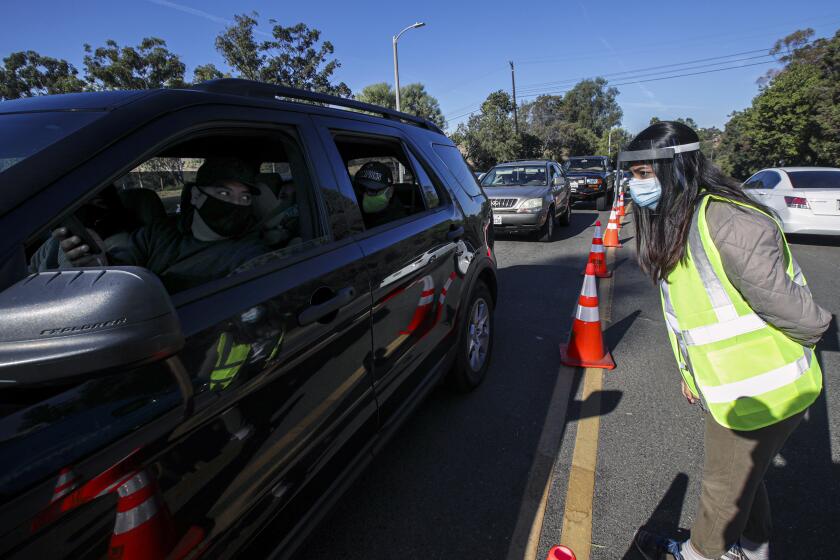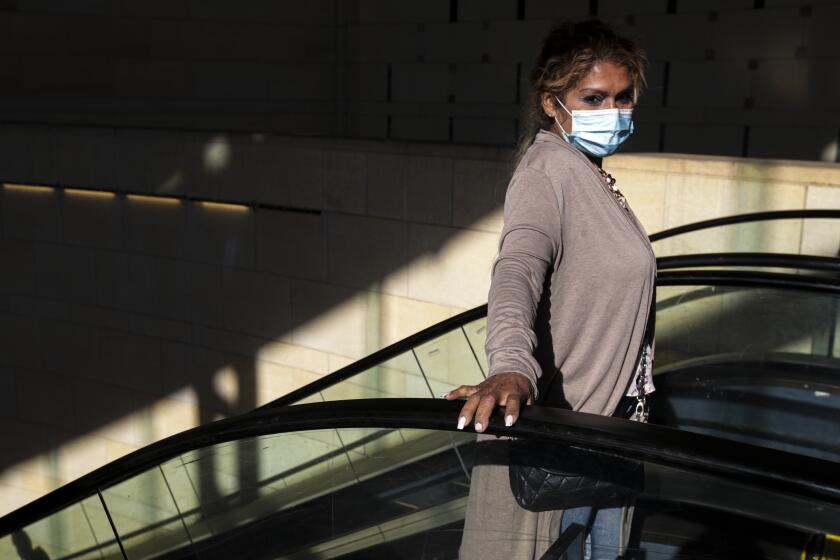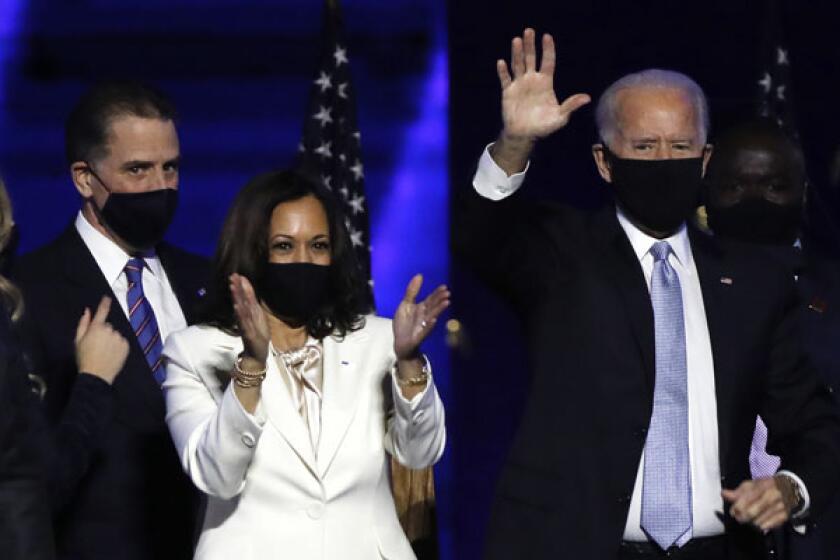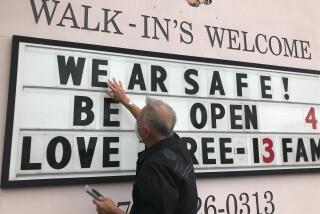Oregon and New Mexico order coronavirus lockdowns as other states resist
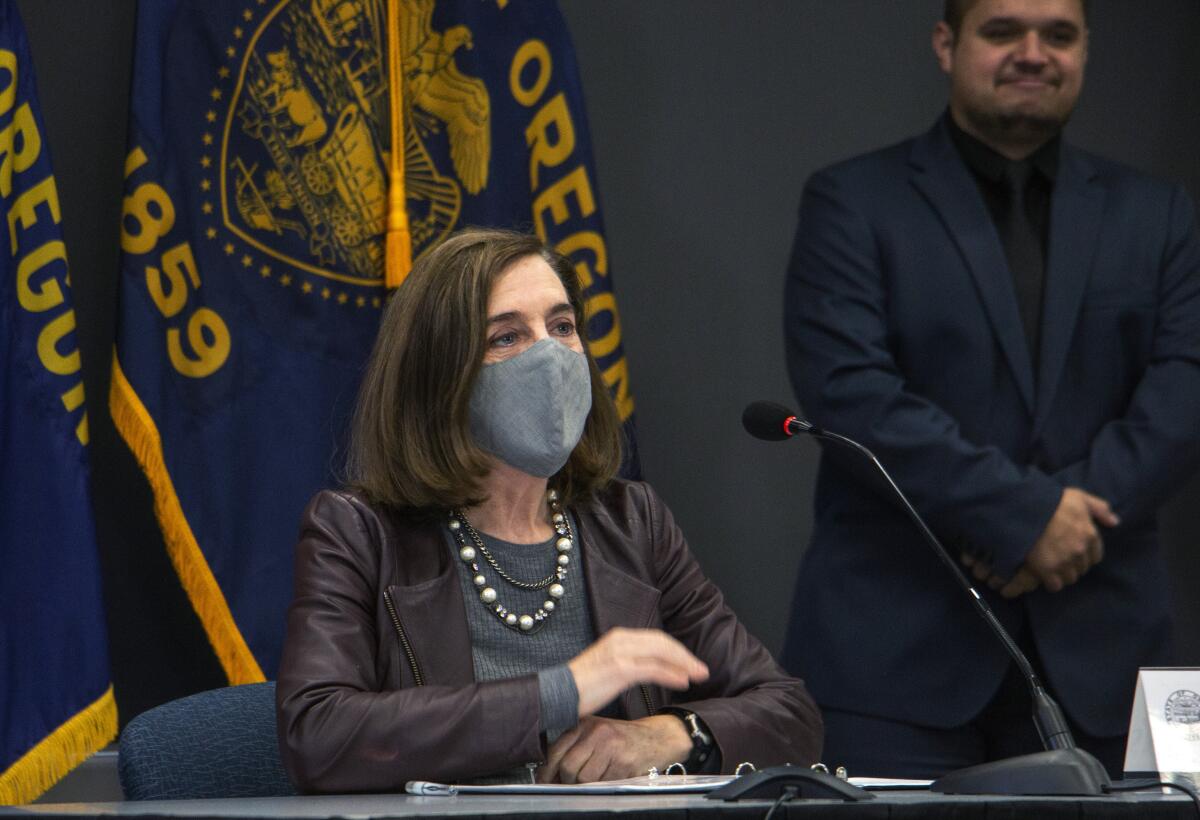
PROVIDENCE, R.I. — The governors of Oregon and New Mexico ordered near-lockdowns Friday in the most aggressive response yet to the latest wave of coronavirus infections shattering records across the U.S., even as many of their counterparts in other states show little appetite for reimposing the hard-line restrictions of last spring.
“We are in a life-or-death situation, and if we don’t act right now, we cannot preserve the lives, we can’t keep saving lives, and we will absolutely crush our current healthcare system and infrastructure,” Democratic Gov. Michelle Lujan Grisham of New Mexico said in imposing a two-week stay-at-home order.
Oregon Gov. Kate Brown ordered a two-week “freeze” starting Wednesday, under which all businesses will be required to close their offices to the public and mandate working from home “to the greatest extent possible.”
While most Oregon stores will remain open, the state’s gyms, museums, pools, movie theaters and zoos will be forced to close, and restaurants and bars will be limited to takeout. Social gatherings will be restricted to six people.
The Democratic governor warned that violators could face fines or arrest.
“For the last eight months, I have been asking Oregonians to follow to the letter and the spirit of the law, and we have not chosen to engage law enforcement,” Brown said. “At this point in time, unfortunately, we have no other option.”
The advisory encourages residents to avoid nonessential travel. It also asks those arriving from another state or country to quarantine for 14 days.
Both states had lockdowns earlier in the year, but the coronavirus is coming back with a vengeance across the country, and the U.S. is facing a long, dark winter. The scourge is blamed for 10.7 million confirmed infections and almost a quarter-million deaths in the U.S., with the closely watched University of Washington model projecting nearly 439,000 dead by March 1, 2021.
Deaths have climbed to an average of about 1,000 a day, and infections are soaring, on Thursday reaching another daily all-time high of more than 153,000. Hospitals are getting swamped.
Still, there is little will among many elected officials to return to the kind of lockdowns and large-scale business closings seen last spring. Some governors also continue to resist issuing statewide mask rules.
Among the reasons they give: public fatigue, fear of doing more damage to already-crippled businesses, lack of support from Washington and the way efforts to tame the virus have become fiercely politicized.
“I think that governors and mayors are, again, in a really tough spot. The American population is emotionally and economically exhausted,” said Dr. Megan Ranney, an emergency physician and professor at Brown University.
President Trump asked all Americans to remain “vigilant” but ruled out a nationwide “lockdown.”
“Hopefully, whatever happens in the future, who knows which administration it will be, I guess time will tell, but I can tell you this administration will not go to a lockdown,” Trump said Friday in his first public remarks since his defeat by President-elect Joe Biden.
A coronavirus outbreak tied to a wedding reception caused 177 infections and 7 COVID-19 deaths. It shows why health officials are nervous about holiday gatherings.
Governors in many states, including New York, Maryland, Virginia and Minnesota, have taken largely incremental measures over the past few days, such as limiting the size of gatherings, making businesses close early, restricting capacity or cutting off alcohol sales earlier in the evening.
Nevada Democratic Gov. Steve Sisolak, who announced Friday that he has tested positive for the coronavirus, has repeatedly argued that containing the spread is largely up to individuals.
“Some people are going to ask, ‘Why not limit retail or casino resorts or restaurants right now?’ That’s a fair question,” he said. “That is the tightrope of trying to balance controlling the COVID-19 spread, protecting our hospitals from surges and, at the same time, not destroying and shutting down our economy.”
In Texas, which this week became the first state to surpass 1 million confirmed COVID-19 cases, Republican Gov. Greg Abbott has emphasized new treatments and vaccines that are expected to become available soon.
As cases surge in California, officials are sounding the alarm about travel and gatherings for the upcoming holiday.
Texas Atty. Gen. Ken Paxton has taken a hard line against new restrictions, suing after El Paso closed nonessential businesses because of a surge so severe that mobile morgues are being brought in. An appeals court Thursday temporarily lifted the shutdown.
Officials have gotten pushback from some constituents, especially business owners who fear for their livelihoods.
In Ohio, Bahram Akradi, founder, chairman and chief executive of Life Time health clubs, objected when the governor added gyms to a list of businesses that could be shuttered if cases continue to rise.
“Another shutdown would just be completely devastating and simply unjust,” Akradi said. “The damage of not allowing people to have healthy activity is much more than the gain.”
In Montana, where cases are up more than 16% in the past week, Democratic Gov. Steve Bullock said he is wary of imposing tougher statewide restrictions without additional federal aid to unemployed individuals and small businesses.
“I never wanted to punish the businesses that are doing right in this pandemic to keep their employees and customers safe. Shutting down those businesses would do just that,” he said.
The political perils of statewide mandates have been on display in Wisconsin. Democratic Gov. Tony Evers issued a “safer at home” order in March that was challenged by Republican lawmakers and struck down in May by the conservative-controlled state Supreme Court.
President-elect Biden faces the huge challenge of rallying a divided public to get behind a unified effort to wear masks and take other basic steps to control the coronavirus.
The result has been a hodgepodge of local limits across the state, with some of the strictest in Milwaukee, which is moving forward with imposing steep fines of between $500 and $5,000 for violations of local health orders.
Other governors have likewise relied on local and county officials to tackle the crisis, creating a patchwork of restrictions around the country. But that strategy has its limits against a virus.
Nashville Mayor John Cooper said he doesn’t plan on reinstating restrictions on the city’s honky-tonks and other businesses. He said shutting down just one county would probably be ineffective against the virus, because the surrounding areas wouldn’t be following the same guidelines.
“We are also subject to what goes on in our state, and we can’t keep just our county safe,” Cooper said.
What makes some COVID-19 patients so much sicker than others? In some cases, people are more vulnerable because their immune systems are hit by friendly fire.
Some economists say the crisis has been falsely portrayed as a choice between the economy and public health. They argue instead that the economy cannot recover until the virus is brought under control and people are confident enough to go shopping and eat at restaurants again.
Experts have argued, too, that strict but relatively short lockdowns could result in less economic pain than the half-measures employed now, which have succeeded only in dragging out the crisis.
Dr. Michael Fine, former director of Rhode Island’s Health Department, said the outbreak requires more aggressive strategies. Closing bars earlier in the evening, he said, “might have worked in July, but there’s not a chance they’ll work now. It’s like taking an eyedropper to a forest fire.
“Short of very profound lockdowns, I don’t think we have a chance of slowing the spread,” Fine said.
More to Read
Sign up for Essential California
The most important California stories and recommendations in your inbox every morning.
You may occasionally receive promotional content from the Los Angeles Times.
